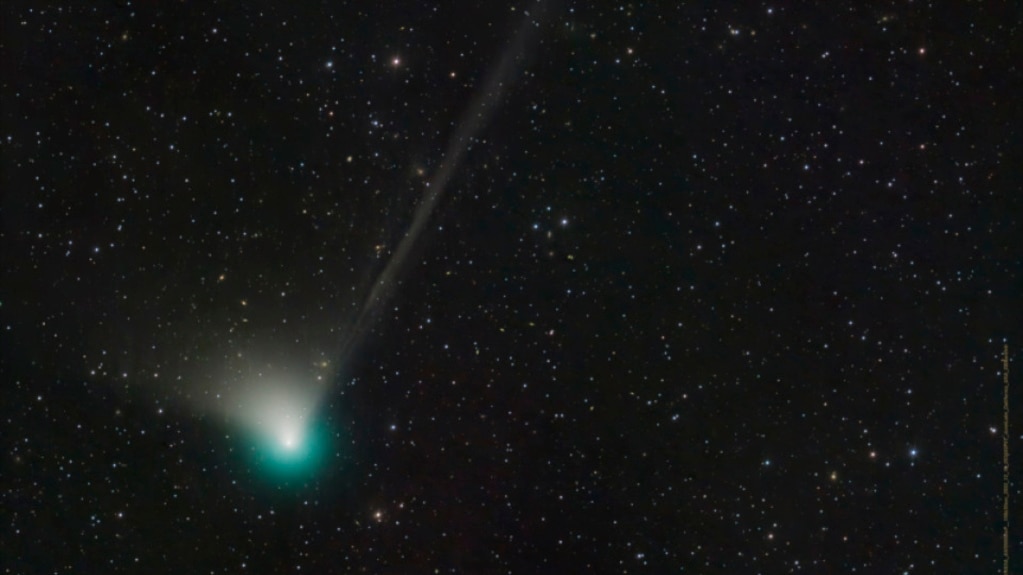A green comet will appear again in Earth’s sky for the first time in 50,000 years.
The American space agency NASA says the comet's last visit came during Neanderthal times. It will come within 42 million kilometers of Earth on Wednesday before continuing on its path, unlikely to return for millions of years.
Discovered less than a year ago, this green comet can be observed in the northern night sky with devices such as binoculars and telescopes. It is also possible to see with one’s own eyes in the darkest corners of the Northern Hemisphere.
The comet will be best seen in the early morning hours. It is expected to brighten as it comes closer and rises higher over the horizon through the end of January. By February 10, the comet will be near Mars.
Viewers in the Southern Hemisphere will have to wait until next month to see it.
Paul Chodas is director of the Center for Near Earth Object Studies at NASA’s Jet Propulsion Laboratory in California.
Chodas said that while several comets have appeared in the sky over the past year, “this one seems probably a little bit bigger and therefore a little bit brighter and it’s coming a little bit closer to the Earth’s orbit."
The comet was discovered last March by researchers using the Zwicky Transient Facility, a special camera at Caltech’s Palomar Observatory. That explains its official, difficult name: comet C/2022 E3 (ZTF).
On Wednesday, the comet will pass between the orbits of Earth and Mars at a relative speed of 207,000 kilometers. Its nucleus, or center, is thought to be about 1.6 kilometers across, with its tails extending millions of kilometers.
The comet is not expected to be nearly as bright as Neowise in 2020, or Hale-Bopp in the mid to late 1990s.
Karen Meech of the University of Hawaii said in an email to the Associated Press that the comet “will be bright by virtue of its close Earth passage ... which allows scientists to do more experiments and the public to be able to see a beautiful comet.”
Scientists are confident in their calculations, putting the comet’s last pass through the solar system at 50,000 years ago.
However, they do not know how close it came to Earth or whether it was even visible to the Neanderthals, said Chodas.
When the comet returns, though, is more difficult to estimate.
Every time the comet passes the sun and planets, their gravitational pulls change the comet’s path by small amounts. However, these small effects lead to major path changes over time.
There is another source of measurement difficulty. Large amounts of dust and gas come off the comet as it heats up near the sun.
“We don’t really know exactly how much they are pushing this comet around,” Chodas explained.
The comet — an ancient object produced from the emerging solar system 4.5 billion years ago — came from what is known as the Oort Cloud well beyond Pluto. This area is believed to extend more than one-quarter of the way to the next star.
While comet ZTF began in our solar system, we cannot be sure it will stay there, Chodas said. If it gets sent out of the solar system, it will never return, he added.
However, you should not worry if you miss it.
“In the comet business, you just wait for the next one because there are dozens of these,” Chodas said. “And the next one might be bigger, might be brighter, might be closer.”
I’m John Russell.
Marcia Dunn reported on this story for the Associated Press. John Russell adapted it for VOA Learning English.

